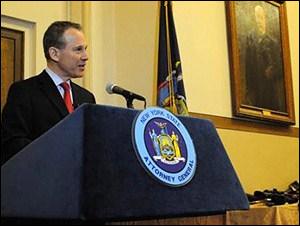Courtesy of Pam Martens.
One critical gauge of how fair and efficient a market is resides in the degree to which it reflects the composite wisdom of all participants. A rigged market, for example, reflects the composite wisdom of just those doing the rigging since they are privy to information that is not shared with all market players.
On March 30, bestselling author Michael Lewis appeared on 60 Minutes to summarize the findings in his newest book, Flash Boys, as follows: “stock market’s rigged.” Michael Lewis was talking about stock market manipulation by high frequency traders.
Increasingly, the U.S. bond market is delivering almost the same message as Michael Lewis. The U.S. Treasury market, which is experiencing a flight to safety (that suggests a slowing economy, lower corporate earnings and thus a lower stock market in the future) is essentially saying that the current composite wisdom of the stock market is either nuts or the market is, indeed, rigged.
Stocks have been setting new highs of late while the yields on the benchmark 10-year and 30-year Treasurys decline. The 10-year Treasury began the year at a yield of approximately 3 percent and closed on Friday at a yield of 2.49. The 30-year Treasury started the year at a yield of approximately 4 percent and closed last week with a yield of 3.33 percent.
Strong economies produce a higher demand for money and, thus, rising interest rates. For stocks, which are wedded to earnings, to be rising while Treasury yields are falling shows a serious decoupling of market logic.
…




